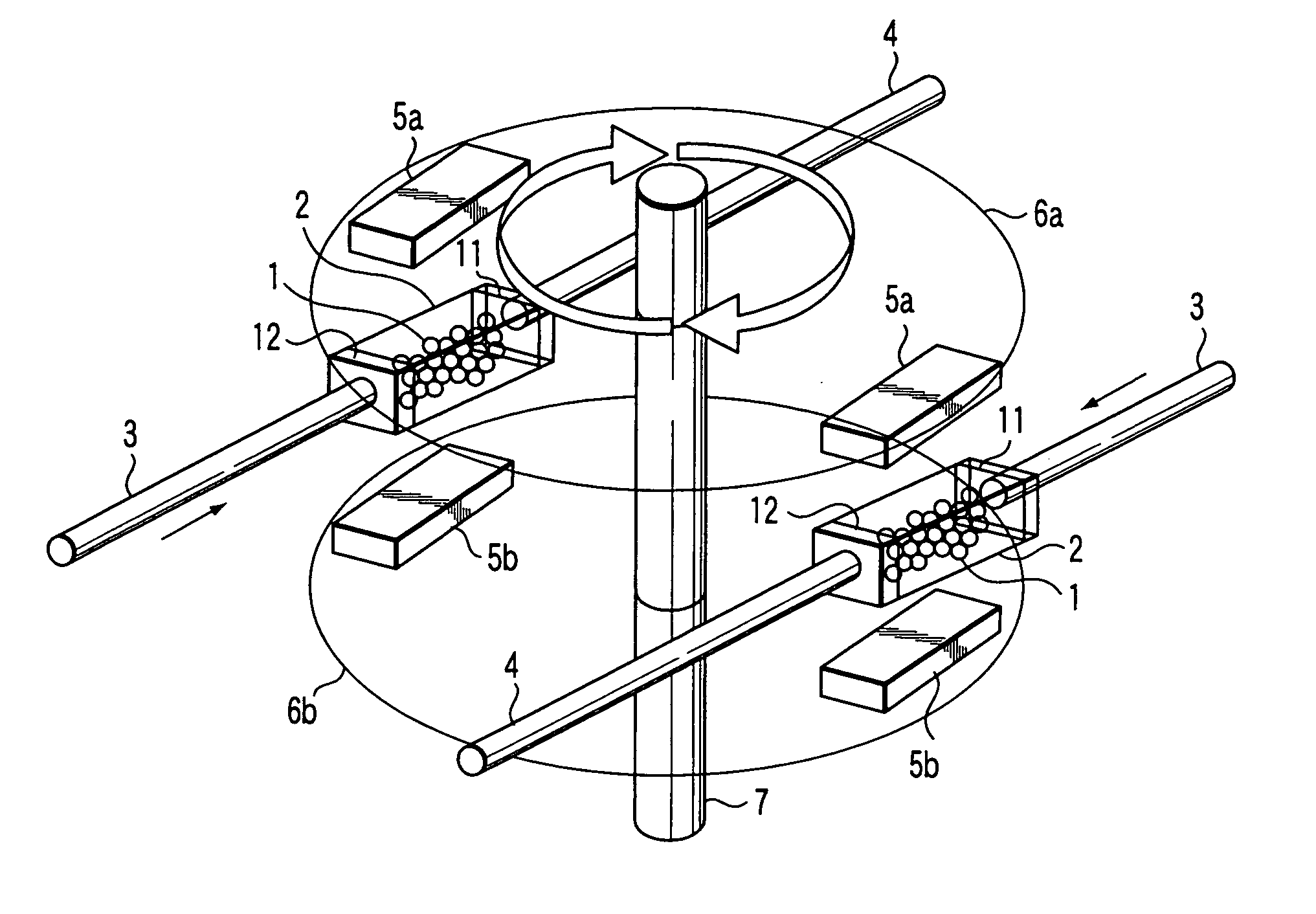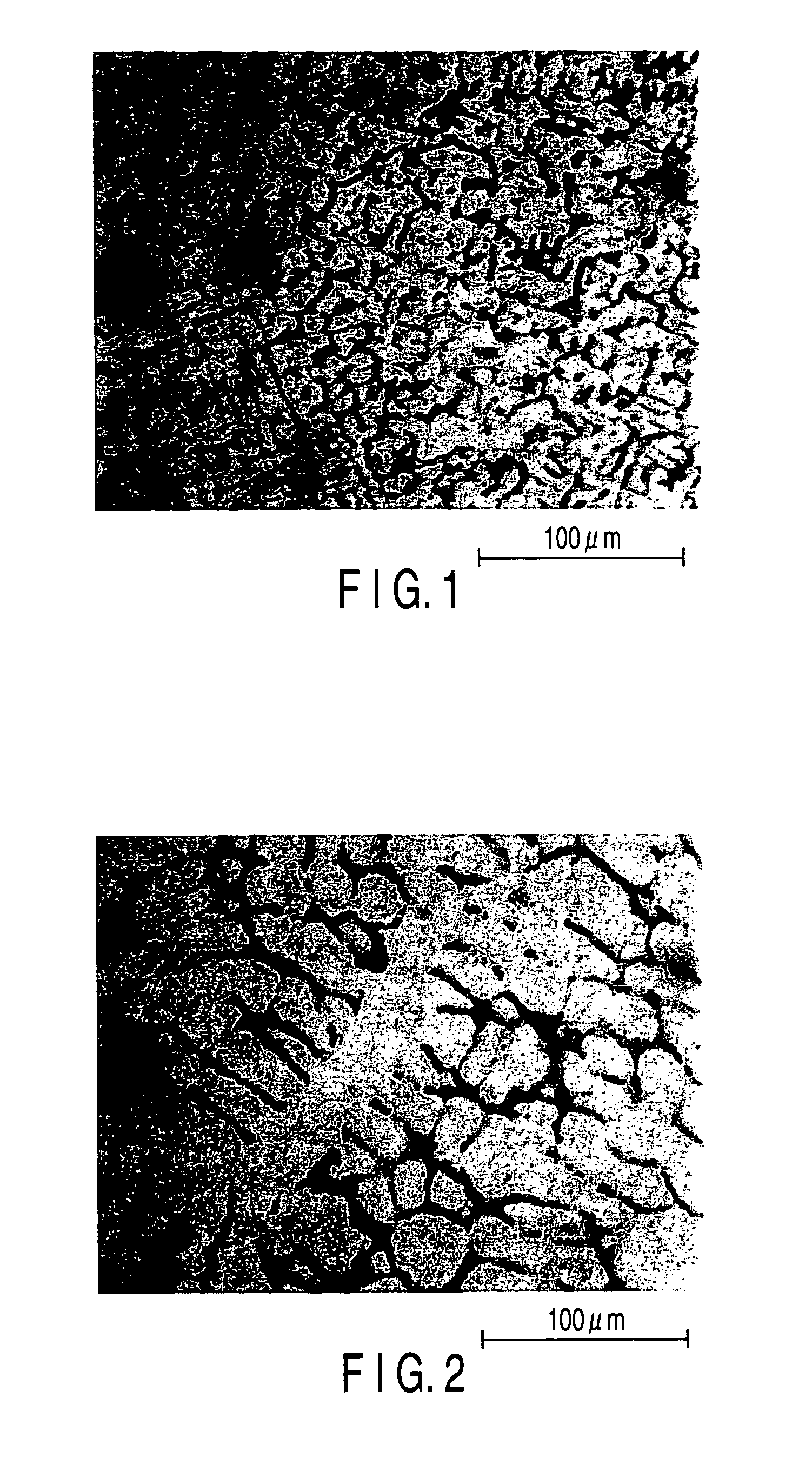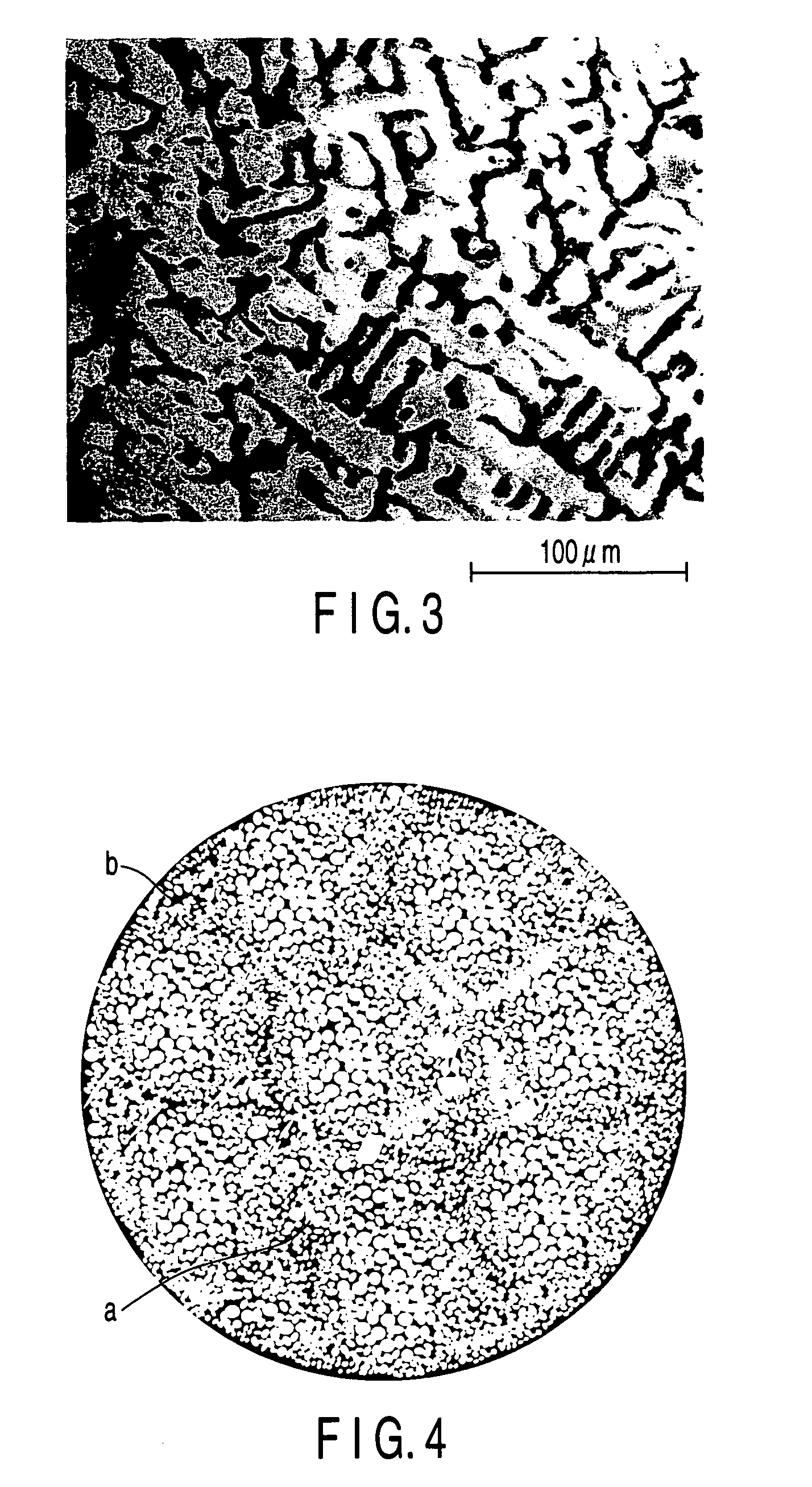Magnetic composite material and method for producing the same
a composite material and magnetic technology, applied in the field of magnetic composite materials, can solve the problems of reducing the performance of the refrigeration system, generating fine particles, and unable to apply a system using a superconducting magnet to ordinary purposes such as refrigeration and air-conditioning, so as to prevent the formation of fine particles, reduce the generation of fine particles, and suppress the pressure loss of a heat exchange medium in the flow channel
- Summary
- Abstract
- Description
- Claims
- Application Information
AI Technical Summary
Benefits of technology
Problems solved by technology
Method used
Image
Examples
Embodiment Construction
[0080]Now, a magnetic composite material and a method for producing the same will be explained with reference to examples.
[0081]
[0082]Fe, Co, Si, and La were blended in the content ratio of 82:5:6:7. The mixture was melted in a high-frequency furnace in an inert gas atmosphere and produced castings in the same atmosphere by varying dimensions and cooling conditions. As a result, 5 types of ingots of mother alloys A to E having different metal textures were prepared. Ar gas was used as an inert gas for mother alloys A, B, D and E, whereas a gas mixture of Ar and He was used for mother alloy C. The casting temperature was 1,500 to 1,600° C. The geometries of ingots were cylindrical and different in diameter and length. Ingots D and E were further subjected to annealing in a vacuum furnace at 1050° C. for a week. Table 1 shows specifications and the results of evaluation tests of ingots of mother alloys A to E.
[0083]
TABLE 1Specification of mother alloys A to E and results of fix testMo...
PUM
| Property | Measurement | Unit |
|---|---|---|
| Length | aaaaa | aaaaa |
| Length | aaaaa | aaaaa |
| Length | aaaaa | aaaaa |
Abstract
Description
Claims
Application Information
 Login to View More
Login to View More - R&D
- Intellectual Property
- Life Sciences
- Materials
- Tech Scout
- Unparalleled Data Quality
- Higher Quality Content
- 60% Fewer Hallucinations
Browse by: Latest US Patents, China's latest patents, Technical Efficacy Thesaurus, Application Domain, Technology Topic, Popular Technical Reports.
© 2025 PatSnap. All rights reserved.Legal|Privacy policy|Modern Slavery Act Transparency Statement|Sitemap|About US| Contact US: help@patsnap.com



